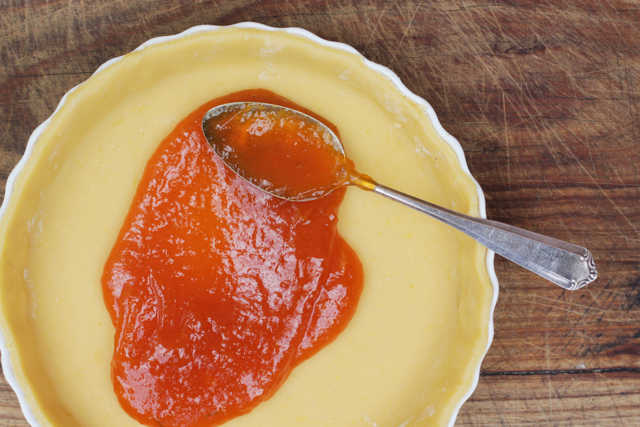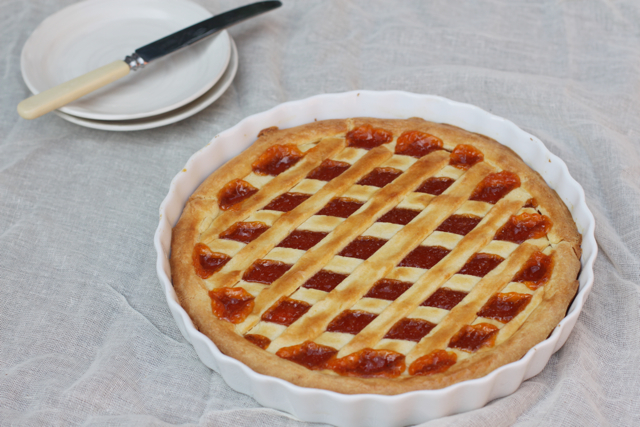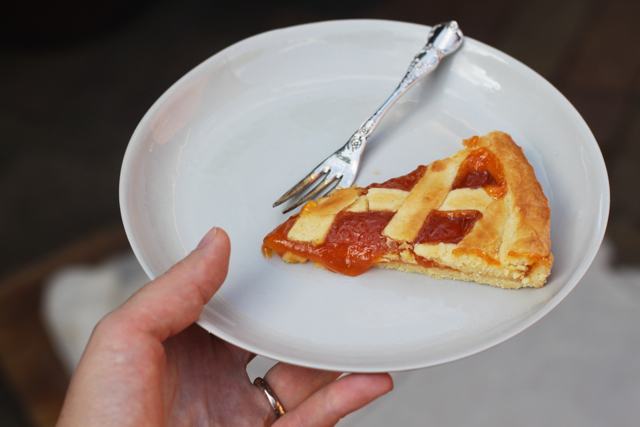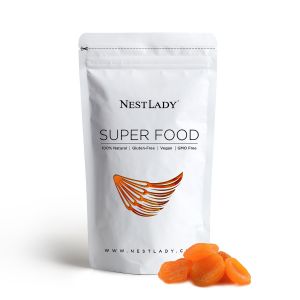This is a 123 year old recipe for apricot jam. It comes from my battered and worn pocket sized edition of Pellegrino Artusi‘s Science in the Kitchen and the Art of Eating Well. I only bought it a few years ago, it’s just battered because I use it all the time. I carry it around in my bag and read it’s old fashioned Italian like a novel. It’s often held open on one page with one hand while the other whisks or stirs.

Why do I like to use such old recipes? Well, because I think often a good, trustworthy classic doesn’t need any alterations, variations or remakes and when a good thing works well and traditions are upheld, there’s integrity in following through and passing on that centuries old recipe. And because, as Italians say in true Italian fashion, la squadra che vince non si cambia. Don’t change a winning team.
For me, it’s not only about passing on the unchanged recipe, but it’s also about exploring those old recipes and seeing how they work today. In many cases, I find the older recipes are simpler, more essential. I am all for simplifying anything in my life – a recipe with a short list of ingredients is always appealing to me, such as Artusi’s recipe for torta margherita, a simple, sponge-like cake that really only needs three ingredients to make. It’s gluten and dairy free. But that’s only a coincidence. Today’s equivalent will probably come out of a packet that lists three times the amount of ingredients.
It’s possible that today’s consumers have become more wasteful or extravagant with ingredients, but we also cook for different reasons now. We’re not just cooking peasant dishes and repurposing leftovers because we need to. But I cringe when I see a chocolate mousse recipe that lists more than simply chocolate, eggs and sugar (or indeed, chocolate and water). And if it’s possible to make something like this Sardinian torrone (nougat) with an extremely traditional recipe using simply egg whites and honey and I don’t need to go out there and buy liquid glucose or make a sugar syrup or add starches, then that’s for me.

Back to this jam. It’s Artusi’s apricot jam. One kilo of fruit, halved and pitted and thrown into the pot till soft, and 500 grams of sugar. The whole thing is passed through a sieve and it comes out so silky smooth, I could just eat it straight from the jar. It’s also wonderful made with peaches. Those blushing-rose peaches with yellow flesh.
I’ve made some of Artusi’s other jams and always loved the results. His rose petal jam is exquisite, when you’re lucky enough to get the right roses – garden grown, with small, floppy petals and wonderfully perfumed. It’s the perfume, you see, that you’re conserving. His tomato jam is unique and surprising. The tomatoes are treated like the fruit they really are.

He himself says that this apricot jam is the best of them all. I like it so much, there is nothing I would do to change it. Some cooks add lemon juice, some add vanilla. Hugh Fearnley-Whittingstall even throws in some butter. But if you have delicious, sweet ripe apricots to begin with – Artusi points out in this recipe that jam should be made with good fruit and that it is erroneous to think you can get the same results with second rate fruit – then these are unnecessary for adding flavour or texture. The apricots speak for themselves, it’s summer in a jar.
It’s the perfect jam to turn into a dessert, even a humble one like a crostata di marmellata. It glided right onto a quickly made pasta frolla – Artusi’s, of course, sweet short crust pastry. It’s my go-to recipe for any sweet tart as it makes a well-balanced, almost cake-like pastry. I used it in these fresh cherry tarts and here in this fig frangipane tart. It never disappoints.

Conserva di albicocche di Artusi, n. 734
Artusi’s Apricot Jam
Makes about 500 grams of jam.
- 1 kg ripe apricots
- Approximately 500 gr of caster (super fine white) sugar
Halve the apricots and remove the pits. Pop them into a medium sized heavy bottomed saucepan and place over low heat. No need to add water but just watch the apricots carefully and give them the occasional stir so they don’t stick and brown on the bottom of the pan. As the pan heats, they will release their own juices and the fruit will begin to simmer. You can help them along by squashing them a little with a wooden spoon as you do your occasional stir. Simmer for approximately 30 minutes.
At this point, the fruit will be completely soft and fallen apart. Pass it through a very fine sieve over a bowl to remove the skins. Weigh your smooth apricot puree then place back in the pot over low heat and add the sugar – Artusi calculates that you’ll need 800 grams of sugar for every kilo of apricot puree (so 4/5 of the weight of the apricots), which for this amount is usually about 500 grams.
Heat until the sugar dissolves, stirring often. Continue simmering on low until you reach the consistency desired. If you let this go quite a while, you will get a harder set jam, but even just a short 10 minutes or so will give you a very soft, lovely jam, perfect for dribbling on toast. The choice is yours.
The best test I find is the good old saucer-in-the-freezer test. Just pop a small plate or saucer in the freezer to get cold and when you want to test how set your jam is, take it out, place a teaspoon-sized blob of hot jam onto the plate and turn it sideways to see how it dribbles, quakes and wobbles. For me, when on that cold saucer, this jam should slide slowly but decisively. You’ll know your jam when you see it.
Pour the bubbling hot jam into clean, dry jars and close the lids. Let them sit on the kitchen bench to cool – as it cools, you’ll hear the pop of the lid sealing. Now your jam jars can be wrapped up and given away to friends or stored in the pantry until opening. This is excellent, as Artusi notes, done the same way with yellow-fleshed peaches.
Apricot Jam Crostata
To use the jam in a crostata, simply prepare Artusi’s pastry (n. 589, Recipe B) as described below and spoon the jam straight out of the pot and onto the pastry. You’ll use about half this quantity of jam (about 200-250 gr).
- 250 gr flour
- 125 gr cold butter
- 110 gr sugar (icing sugar is the best, otherwise fine caster sugar)
- 1 egg plus 1 egg yolk (save the white for brushing on top of the pastry for a shiny crust)
- zest of 1 lemon
Chop the cold butter into small pieces and add to the flour and sugar. Pulse or (if using hands) rub the butter into the flour until you get a crumbly mixture and there are no more visible pieces of butter. Mix in the lemon zest and beaten egg and the yolk until the pastry comes together into a smooth, elastic ball. Let it rest in the fridge for at least 30 minutes. Artusi says if you do this the day before, even better.
After resting, divide the dough into two pieces, one slightly larger than the other. Roll this larger one out to about 3mm thickness to cover your pie dish. Roll out the rest of the pastry and with a pastry cutter or sharp knife, cut long strips about 2cm wide. Fill the pie with jam and criss-cross your lattice strips over the top. If you like, use the leftover egg white to brush gently over the top of the pastry. Bake at 180ºC for about 25 minutes or until it is golden brown.
Original Website: 100 year old apricot jam | Emiko Davies


 English
English  中文
中文 